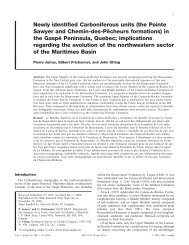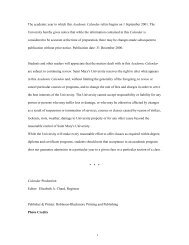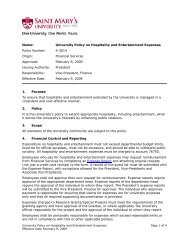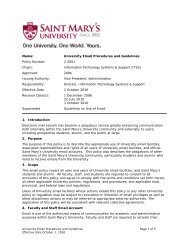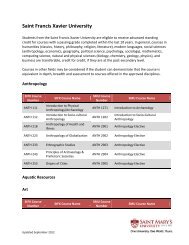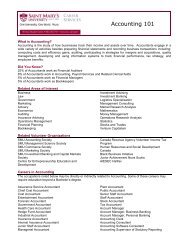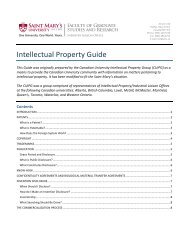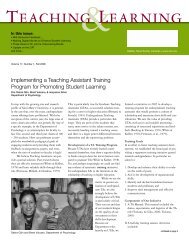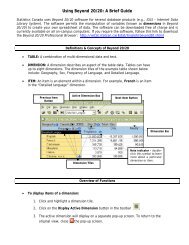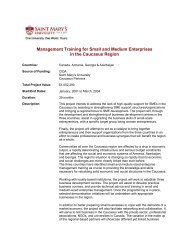Steven Estey - Saint Mary's University
Steven Estey - Saint Mary's University
Steven Estey - Saint Mary's University
You also want an ePaper? Increase the reach of your titles
YUMPU automatically turns print PDFs into web optimized ePapers that Google loves.
Feature Article<br />
22 MAROON & WHITE I SAINT MARY’S UNIVERSITY<br />
Professor Tony Bowron, president<br />
of CB Wetlands & Environmental<br />
Specialists Inc., in his other office.<br />
Spotlight: Green Entrepreneurs<br />
Professor works to restore lost salt marshes.<br />
By Richard Woodbury<br />
Tony Bowron witnesses some of the most beautiful<br />
scenery when he’s at work. Some mornings, it’s a heavy<br />
mist covering the wetland where he’s working, which is<br />
soon replaced by a sunrise. Other days, he sees thunder<br />
clouds form in the distance and hears the lightning crash,<br />
although they never quite seem to reach him. And not a<br />
day goes by where a Great Blue Heron or an eagle doesn’t<br />
fly by. “You sort of step back and go, ‘This is our office,’”<br />
says Bowron, marvelling in the sights he takes in every day.<br />
Bowron is a part-time environmental studies professor at <strong>Saint</strong><br />
Mary’s and the president of CB Wetlands & Environmental<br />
Specialists Inc. His company rebuilds and restores wetlands.<br />
Wetlands are a prominent feature of Nova Scotia’s landscape.<br />
And as the province is almost entirely surrounded by the<br />
ocean, salt marshes abound.<br />
Wetlands have important social, ecological and economic<br />
functions. They provide habitat for plants, fish and other<br />
animals, and also help protect ecosystems by removing<br />
organic waste and bacteria. They filter excess nutrients and<br />
contaminants, which contributes to human health.<br />
However, salt marshes in particular are in danger. Over<br />
the last 400 years, 80 per cent of the ones along the Bay<br />
of Fundy (and 65 per cent provincewide) have been lost<br />
due to human activity.<br />
“That’s a lot of ecological, social and economic loss that has<br />
occurred,” says Bowron.<br />
MAROON & WHITE I SAINT MARY’S UNIVERSITY 23



